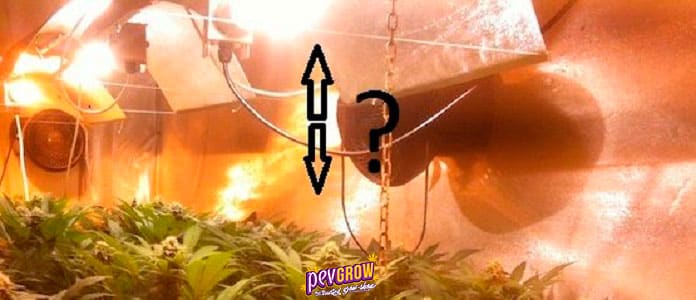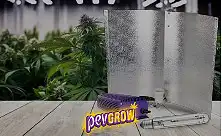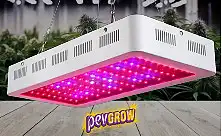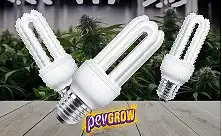

In constant struggle for the regulation of cannabis, mainly in the medicinal field.
01-09-2024 16:00:42 - Updated: 1 September, 2024
The height of the lights in an indoor grow is a headache for many growers. We will try to shed some light on this topic, which can be very extensive, but we will attempt to make it as clear as possible. The reflection of light on our weed plants is very important to emulate the sun and provide the most pleasant environment possible for the healthy growth of our cannabis plants.
We need to ensure total coverage of our entire grow, and that it is as uniform as possible. To achieve this, two highly recommended devices to use are a lux meter to measure the lumens reaching different points of our grow, as well as a thermo-hygrometer to monitor temperature and humidity at various points in the grow, especially at the tips of our weed plants, which is where the light is projected the most.
🧐 Why is Light Distance So Important?
The distance of the light in indoor weed cultivation directly affects the amount of light (measured in lumens or micromoles per second) that the plants receive. If the light is too close, the plants can burn, become stressed, or experience uneven growth. On the other hand, if it is too far away, the plants may stretch in search of light, weakening their stems and reducing their ability to produce dense flowers. The key is to find a balance: providing enough light without exceeding the levels that the plant can handle at each stage of its development.
❤️ Distance by Type of Light
1. HPS Lights (High-Pressure Sodium)
These are some of the most commonly used lights in weed cultivation, especially during flowering due to their red/yellow light spectrum that mimics sunlight at the end of summer.
- 250W HPS: The optimal distance is 25-35 cm. This light is suitable for small spaces and grows with few plants.
- 400W HPS: Maintain a distance of 35-45 cm. This type of light is ideal for medium-sized spaces.
- 600W HPS: It is one of the most common lights in indoor grows. The ideal distance is 40-60 cm during the flowering phase.
- 1000W HPS: This light is very powerful and is used in large growing spaces. The recommended distance is 60-80 cm.
However, this distance is ideal as long as a good temperature can be maintained, otherwise we will always prioritize that the degrees do not exceed 26 or 27ºC at most, with 24 or 25 being ideal.
2. LEC Lights (Light Emitting Ceramic)
LEC lights have gained popularity due to their efficiency and more complete light spectrum. They generate less heat than HPS and provide light that is closer to the solar spectrum.
- LEC 315W: The appropriate distance is 30-40 cm. It is an ideal light for small grows with good yield.
- LEC 630W: Place this light at a distance of 50-60 cm. It is suitable for medium to large spaces, providing high-quality light.
Just like with HPS lights, temperature must also be considered with LEC to avoid overheating.
3. LED Lights
The LED grow lights vary widely in quality, power, and spectrum. They are very energy-efficient and allow for adjusting intensity and spectrum according to the growth phase.
- Vegetative: In this phase, the recommended distance for most LED lights is 50-70 cm.
- Flowering: During this stage, the distance can be reduced to 30-50 cm to maximize the light that the plants receive.
It is important to follow the manufacturer’s recommendations, as each LED model has unique specifications.
4. CFL Low Consumption Lights
The CFL lights are popular in weed cultivation due to their low consumption and their ability to emit light in a spectrum suitable for vegetative growth. Although they are less powerful than other types of lights, they are useful for small spaces and for beginner growers.
- CFL from 125W to 200W: Maintain a distance of 10-15 cm. These lights emit little heat, so they can be placed close to the plants without the risk of burning them.
- CFL 250W: The recommended distance is 20-30 cm. Although they generate more light than smaller models, it is still important to monitor the temperature near the leaves.
🔥 Adjustments by Life Cycle Stages
1. Germination and Early Days
In this phase, the plants are extremely sensitive and require soft light. Keep the lights at a greater distance, generally between 70 and 100 cm to avoid burns. As the seedlings strengthen, you can gradually bring the light closer.
2. Vegetative Phase
The goal in this stage is to promote vigorous growth without causing stress. For 600W HPS lights, keep the light at 40-60 cm, while for LEDs, a distance of 50-70 cm is usually ideal.
3. Flowering Phase
During flowering, the light should be more intense to promote the formation of dense buds. For a 600W HPS, a distance of 40 cm is optimal, while a 315W LEC should be placed at 30-40 cm.
👾 Common Problems and How to Solve Them
Burned or Curled Leaves:
This is often a sign that the light is too close. If you notice that the upper leaves are drying out or burning, raise the light and adjust the ventilation to improve heat distribution.
Excessive Stretching:
If the plants are growing too tall and thin, it is likely that the light is too far away. Gradually bring it closer so that the plants receive the appropriate light intensity and develop strong stems.
Uneven Growth:
When plants grow more to one side, it may be due to uneven light distribution. Ensure that the light is centered and adjust its height to cover the entire growing space evenly. It is also interesting to rotate the plants to place those on the perimeter in the center and vice versa, this can be done every week or every 10 days to try to ensure that all plants receive roughly the same light intensity. This is more important with lights that concentrate more light in the center; with LED bar panels, it is not as necessary because they achieve excellent light distribution.
👌 Advanced Considerations for Experienced Growers
In addition to general recommendations, there are additional factors you should consider:
- Temperature and Ventilation: The heat generated by the lights, especially HPS, can affect the distance. Use fans to maintain airflow and prevent the temperature from rising too much near the plants.
- Growing Surface and Reflectivity: Using reflectors or white walls helps maximize available light, which can allow you to place the light at a greater distance without losing efficiency.
- Light Spectrum: Some LED models allow you to adjust the light spectrum, which may require additional adjustments in distance to optimize light absorption at different stages.
✨ Conclusion
Correctly adjusting the light distance is one of the most critical aspects of a successful indoor grow. By following distance recommendations according to the type of light and growth phase, you will ensure balanced development, healthy plants, and an abundant harvest. Remember that observing the plants and adjusting according to their response is key to optimizing the performance of your grow.
You may also be interested in:
🌞 Frequently Asked Questions (FAQs)
What distance should the light be from the plants?
The distance depends on the type of light and the growth phase. For a 600W HPS, 40-60 cm is ideal in most stages. For LEC lights, maintain 30-40 cm.
What distance should an LED light have indoors?
During the vegetative phase, the ideal distance is 50-70 cm, and in flowering, 30-50 cm. The exact distance varies according to the power and quality of the LED.
What is the ideal distance for a 315W LEC light?
For this type of light, the optimal distance is 30-40 cm in all phases, with slight adjustments during flowering to maximize intensity.
How to adjust the distance in the early days?
Seedlings are sensitive to intense light, so it is best to start with a greater distance (70-100 cm) and gradually bring it closer as the plants strengthen.








